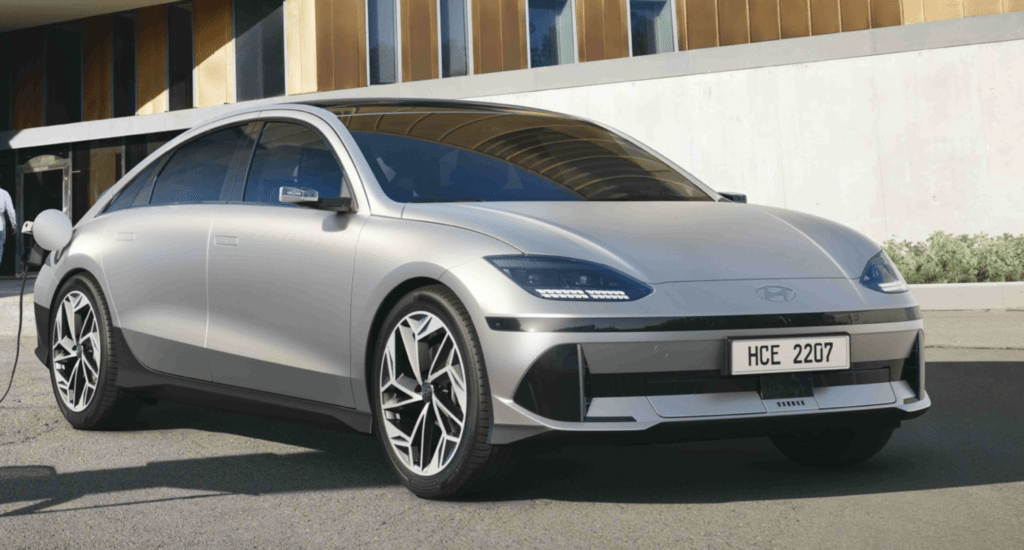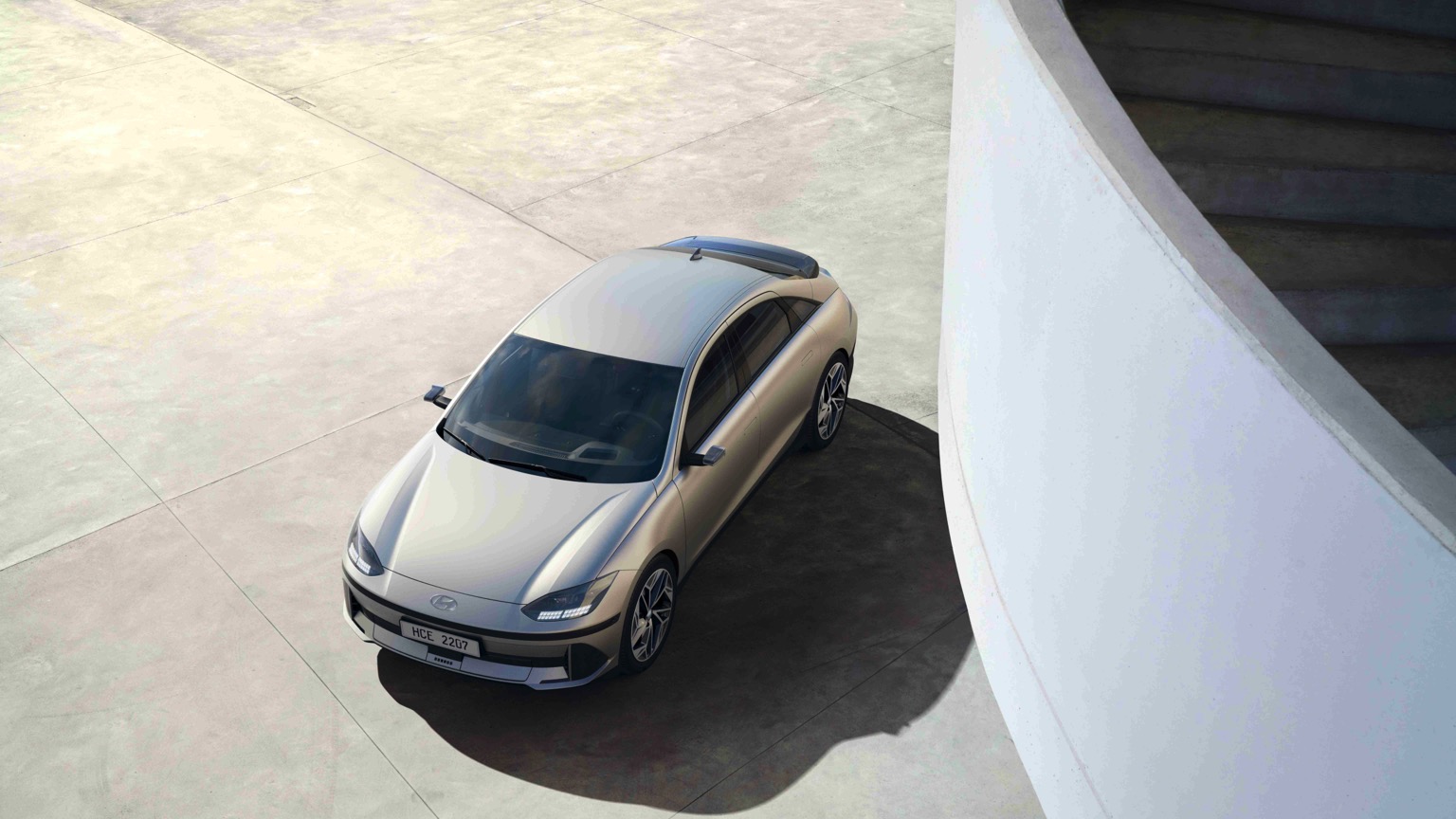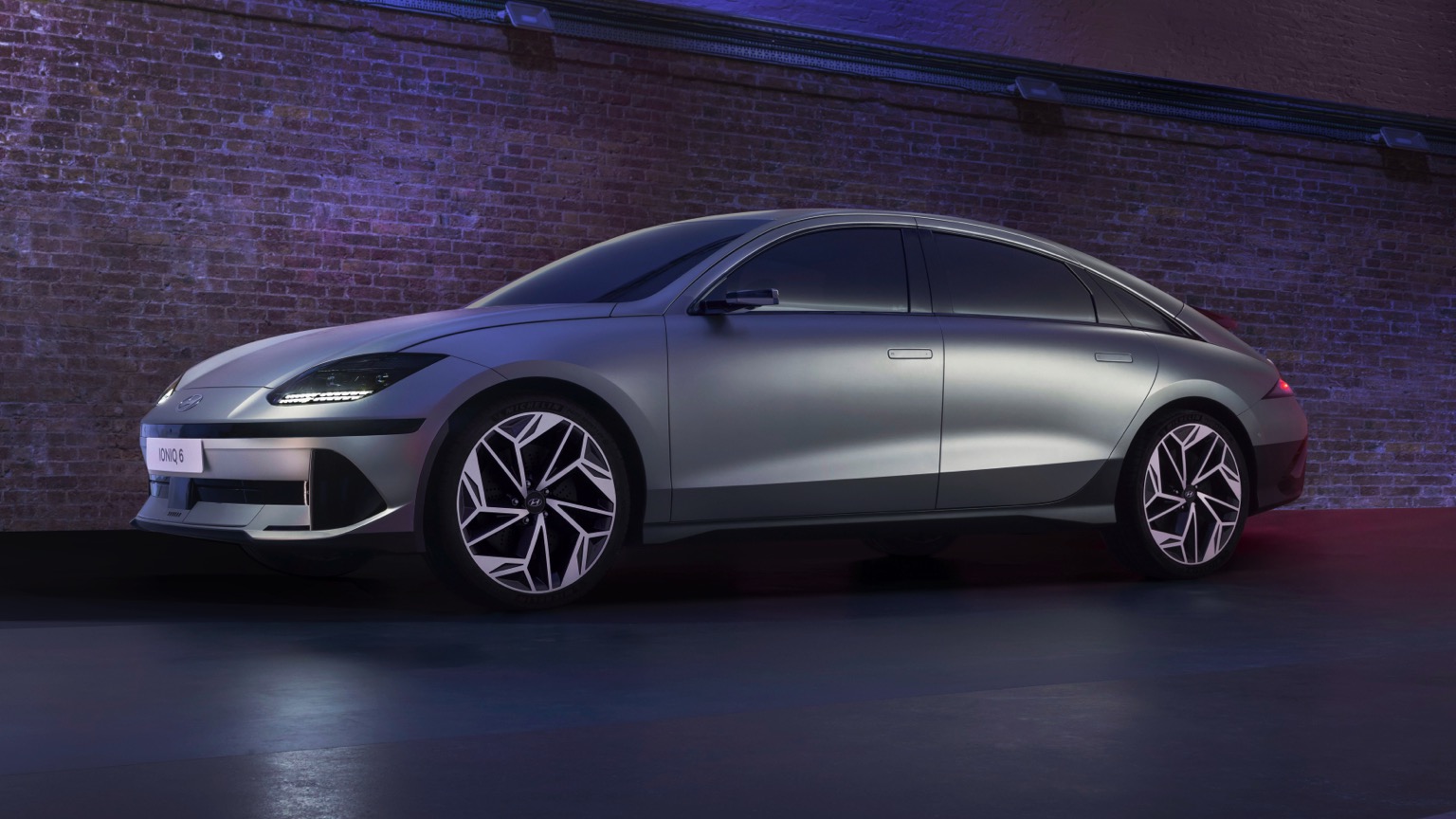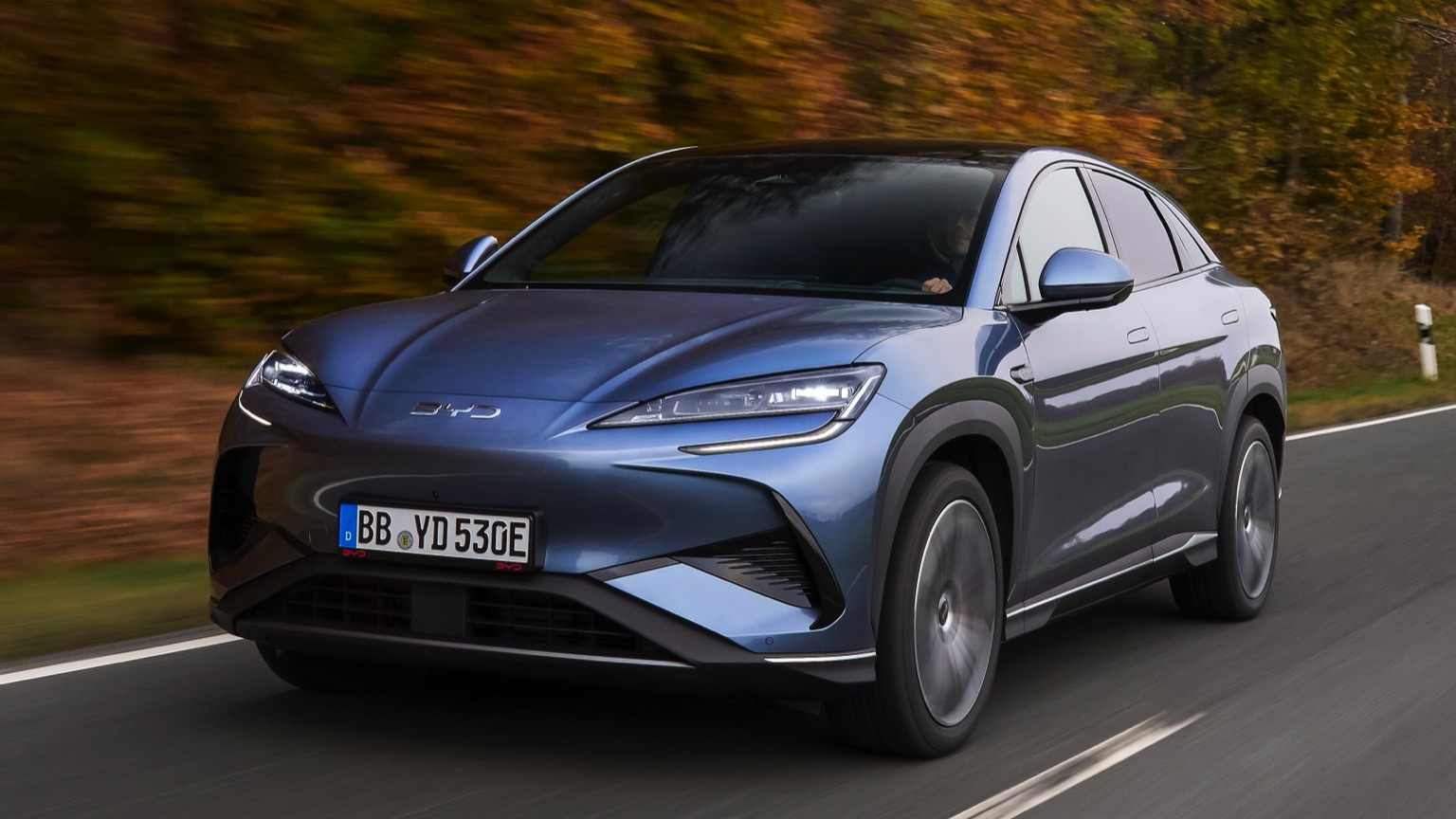Driving Range
In short, how many miles you can travel on a full charge. Is length important? Let’s not open that can of worms…
Efficiency
How many kWh of charge are needed to travel a set distance. The fewer needed, the more efficient your EV is. Easy!
Battery
The bigger the battery, the more power it can hold. In essence, fewer stops needed to top up your charge. Ahh, simplicity!
Top Speed
The maximum speed you can reach with your foot pressed hard to the floor. Important when escaping a zombie apocalypse, we assume.
Seats
Well, you don’t want to have to leave anybody at home… or do you?
Body
From stylish SUVs and compact crossovers, to curvaceous coupes and handy hatchbacks, there’s a perfect shape for everyone!
Isofix
The safe way to attach a child seat. Typically, these are hidden in the join between the back seats, alongside the crumbs from your last meal deal.
Safety Rating
A measure that considers the amount of safety kit installed, how a vehicle performs in crash testing and how safe it is for both pedestrians and cyclists.
| City - Cold Weather | 260 miles |
| Highway - Cold Weather | 195 miles |
| Combined - Cold Weather | 230 miles |
| City - Mild Weather | 395 miles |
| Highway - Mild Weather | 255 miles |
| Combined - Mild Weather | 315 miles |
Indication of real-world range in several situations. Cold weather: 'worst-case' based on -10°C and use of heating. Mild weather: 'best-case' based on 23°C and no use of A/C. For 'Highway' figures a constant speed of 110 km/h is assumed. The actual range will depend on speed, style of driving, weather and route conditions.
| Charge Port | Type 2 |
| Port Location | Right Side - Rear |
| Charge Power | 11 KW AC |
| Charge Time | 8hr |
| Charge Speed | 34 mph |
| Fastcharge Port | CCS |
| FC Port Location | Right Side - Rear |
| Fastcharge Power (max) | 233 |
| Fastcharge Time | 16m |
| Fastcharge Speed | 720 mph |
General Charging (0 - 100%)
Charging is possible by using a regular wall plug or a charging station. Public charging is always done through a charging station. How fast the EV can charge depends on the charging station (EVSE) used and the maximum charging capacity of the EV
| Charging Point:Charging Point | Power:Power | Time:Time |
|---|---|---|
| Charging Point:Wall Plug | Power:2.3 kW | Time:38hr |
| Charging Point:1-Phase 16A | Power:3.68 kW | Time:23hr 45m |
| Charging Point:1-Phase 32A | Power:7.36 kW | Time:11hr 45m |
| Charging Point:3-Phase 16A | Power:3.68 kW | Time:8hr |
| Charging Point:3-Phase 32A | Power:7.36 kW | Time:8hr |
Rapid Charging (10 - 80%)
Rapid charging enables longer journeys by adding as much range as possible in the shortest amount of time. Charging power will decrease significantly after 80% state-of-charge (SoC) has been reached.
| Charging Point:Charging Point | Average Power:Average Power | Time:Time |
|---|---|---|
| Charging Point:CCS 50 | Average Power:50 kW | Time:1hr 5m |
| Charging Point:CCS 100 | Average Power:95 kW | Time: 34m |
| Charging Point:CCS 150 | Average Power:135 kW | Time: 24m |
| Charging Point:CCS 175 | Average Power:155 kW | Time: 21m |
| Charging Point:CCS 350 | Average Power:200 kW | Time: 16m |
| EVDB Real Range | 275 miles |
| EVDB Vehicle Consumption | 269 Wh/mi |
| EVDB CO2 Emissions | 0 g/mi |
| EVDB Vehicle Fuel Equivalent | 1.5 l/100mi |
| WLTP Real Range | 362 miles |
| WLTP Rated Consumption | 24.3 Wh/mi |
| WLTP Vehicle Consumption | 20.4 Wh/mi |
| WLTP CO2 Emissions | 0 g/mi |
| WLTP Rated Fuel Equivalent | 1.66 l/100mi |
| WLTP Vehicle Fuel Equivalent | 1.98 l/100mi |
| Acceleration 0 - 100 km/h | 5.1 sec |
| Top Speed | 115 mph |
| Electric Range* | 275 miles |
| Total Power* | 239 kWh |
| Total Torque* | 605 Nm |
| Drive | AWD |
| Safety Rating | |
| Rating Year | 2022 |
| Adult Occupant | 97% |
| Child Occupant | 87% |
| Vulnerable Road Users | 66% |
| Safety Assist | 90% |
For more details on the safety rating of this vehicle, visit euroncap.com
| Nominal Capacity | 77.4 kWh |
| Battery Type | Lithium-ion |
| Number of Cells | 192 |
| Architecture | 800 V |
| Useable Capacity | 74 kWh |
| Cathode Material | N/A |
| Pack Configuration | 192s2p |
| Nominal Voltage | 697 V |
| Length | 4855 mm |
| Width | 1880 mm |
| Width (with mirrors) | 2073 mm |
| Height | 1495 mm |
| Wheelbase | 2950 mm |
| Weight Unladen (EU) | 2095 kg |
| Gross Vehicle Weight (GVWR) | 2520 kg |
| Max. Payload | 500 kg |
| Cargo Volume | 401 L |
| Cargo Volume (Max) | N/A |
| Cargo Volume Frunk | 15 L |
| Roof Load | 80 kg |
| Tow Hitch Possible | Yes |
| Towing Weight Unbraked | 750 kg |
| Towing Weight Braked | 1500 kg |
| Vertical Load Max | 100 kg |
| Seats | 5 |
| Isofix | Yes, 2 seats |
| Turning Circle | 11.8m |
| Platform | HMG E-GMP |
| Car Body | Saloon |
| Segment | D |
| Roof Rails | No |
| EV Dedicated Platform | Yes |
* = estimated value. Average energy consumption and range based on moderate drive style and climate. Real-life values may differ significantly. Pricing information might not be actual for some regions. No rights can be derived from the information on this site.

Hyundai IONIQ 6 Long Range AWD Charging Guide
The Hyundai IONIQ 6 emerges as a pivotal chapter in Hyundai’s journey toward sustainable and stylish electric mobility. A fusion of cutting-edge design, advanced features, and eco-friendly engineering, the IONIQ 6 embodies Hyundai’s commitment to a future where electric vehicles redefine the driving experience.

How to charge the Hyundai IONIQ 6??
Charging the Hyundai IONIQ 6 is a straightforward process designed to cater to the modern driver’s convenience. Utilising a home charging station, preferably a Level 2 charger, allows owners to conveniently charge their vehicle overnight for daily use. Additionally, the IONIQ 6 is compatible with public charging stations, offering flexibility during longer journeys.
How long does it take to charge the Hyundai IONIQ 6 Long Range AWD?
10 hours and 34 minutes*
*Using a standard 7kWh charger, such as zappi it would take 10 hours and 34 minutes to fully charge your 74kWh battery. The Hyundai IONIQ 6 Long Range AWD also has the capability to be charged on the 22kWh zappi, which would reduce this charging time down to 8 hours.
What is the range of the Hyundai IONIQ 6 Long Range AWD?
275 miles**The range of the Hyundai IONIQ 6 Long Range AWD with the 74kWh battery, differs between 195 miles and 395 miles depending on your driving conditions and the type of road. Typically, the average range from a full charge will be around 275 miles.
How much does it cost to charge the Hyundai IONIQ 6 Long Range AWD?
£5.55**It could cost just £5.55 to charge the Hyundai IONIQ 6 Long Range AWD, with the 74kWh battery, when fully utilising off-peak charging on an Octopus Intelligent tariff, at 0.075p/kWh. In contrast, peak charging on a standard rate of 0.34p/kWh can cost £25.16 to charge up.

Features of the Hyundai IONIQ 6.
The Hyundai IONIQ 6 is poised to impress with a suite of features designed to elevate the electric driving experience. While specifications can vary, expect to find advanced safety features, cutting-edge infotainment systems, and Hyundai’s commitment to creating an intuitive and comfortable driving environment.

Can a Hyundai IONIQ 6 use a Tesla Supercharger?
The Hyundai IONIQ 6 does not use Tesla Superchargers. However, it typically comes equipped with a CCS (Combined Charging System) connector, ensuring compatibility with a variety of public charging networks. This provides IONIQ 6 drivers with the flexibility to charge at different locations without relying on Tesla-specific infrastructure.

What is the difference between the IONIQ 5 and IONIQ 6?
The Hyundai IONIQ 5 and IONIQ 6 are different models in Hyundai’s electric vehicle lineup. The IONIQ 5 is a midsize crossover SUV with a spacious and flexible interior, designed for those who prefer the versatility of an SUV. On the other hand, the Ioniq 6 is a saloon, likely appealing to those who prioritise a more traditional saloon driving experience with a focus on performance and style.
Both models feature advanced technology, safety features, and eco-friendly engineering, with charging capabilities using CCS connectors.

Where style meets sustainability.
The Hyundai IONIQ 6 is not just an electric vehicle; it’s a testament to Hyundai’s commitment to combining style with sustainability. With its anticipated features and forward-thinking design, the IONIQ 6 represents a significant stride toward a greener and more innovative automotive landscape.
Similar Electric Vehicles























